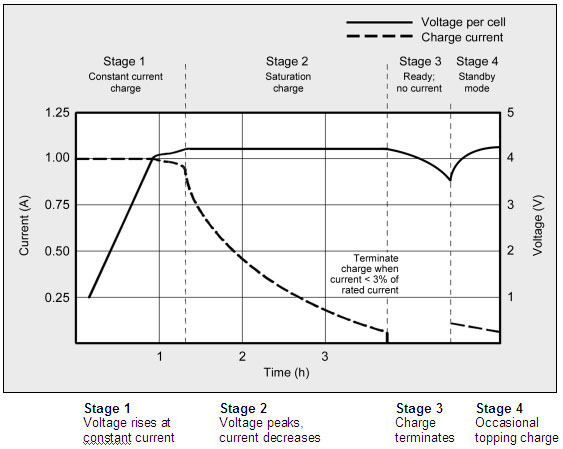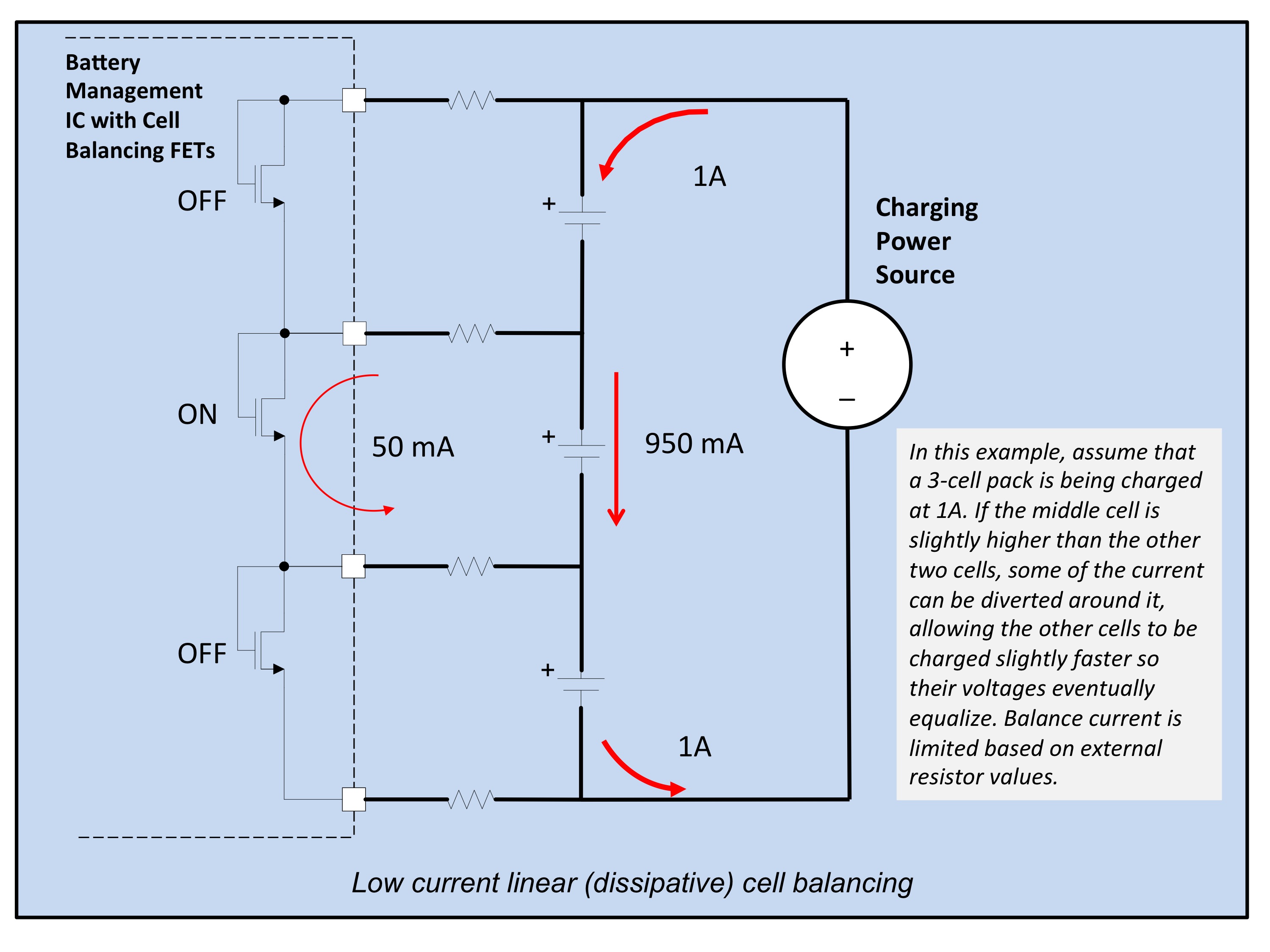Hi,
I am hoping that someone can help me reconcile what I see as a contradiction when implementing a multi-pack charger and a Battery Management System (BMS). I’m sure that the problem is at my end, so a correction to my understand will be most welcome.
- As I understand it, when charging Lithium-Ion batteries a CC/CV strategy must be used.

Source: Cadex/Battery University
The relevant point for my question is at Stage 3. That is, the charger MUST switch off the charger when the current is <3% (30mA in the example graph) of the starting current.
- If one is charging a multi-pack Lithium-Ion battery, a BMS should be used to ensure that each cell in the pack remains within limits. From my enquiries, it seems that the “bypass” technique is very common design.
Source: TI.COM
In this design, once a cell reaches its maximum charge voltage (4.2v), a controller shunts current around the cell to keep the voltage within limits.
My assumptions from the arguments above are: Once the three cells in the battery pack (shown above) have reached their maximum charge voltage, all three bypass circuits will be conducting. The current flowing through each cell will eventually drop to the <3% value, but the bypass current will be adding to this value. Thus, it is 30mA (through the cells) plus the 50mA through the bypass circuits that is seen by the charger.
Question. How does the CC/CV charger know when to turn off?
Regards, M
